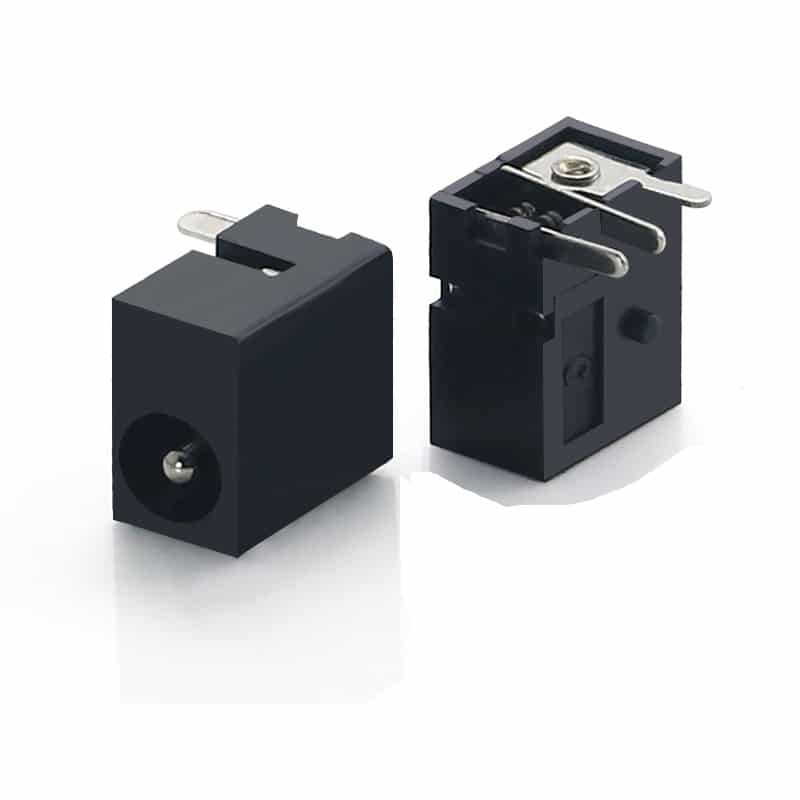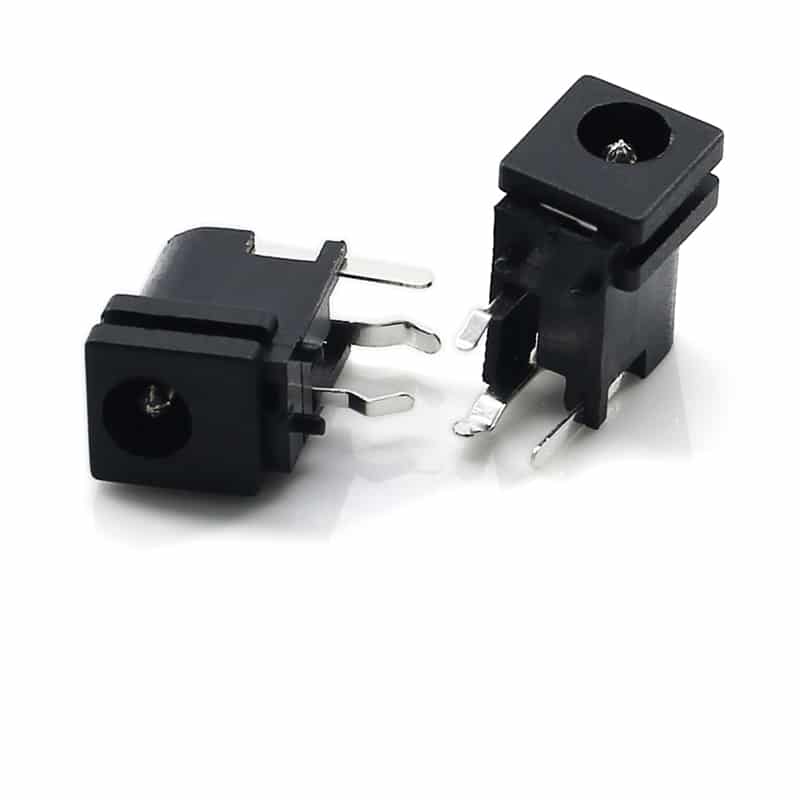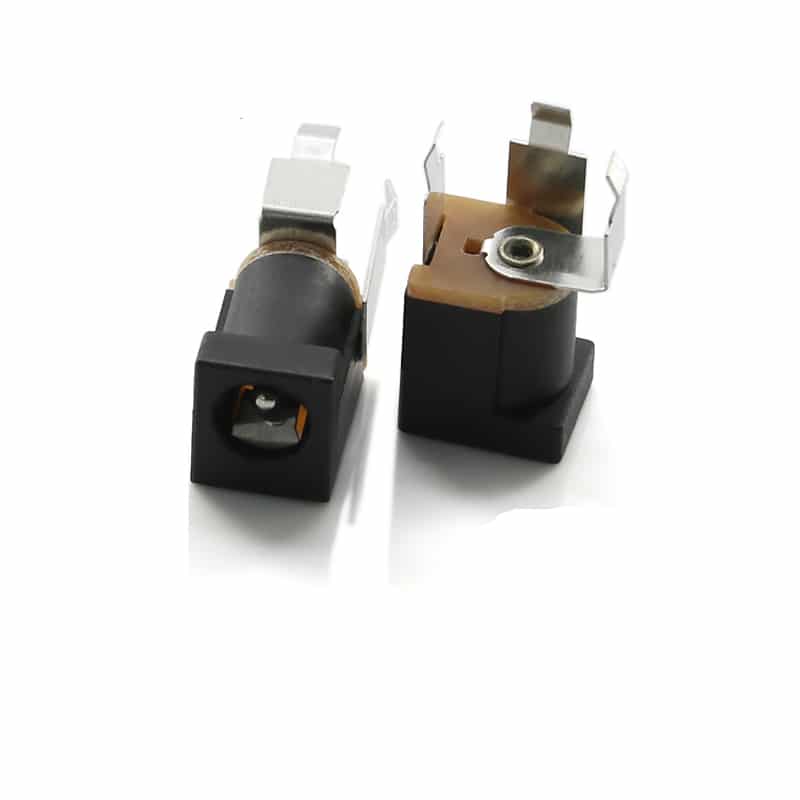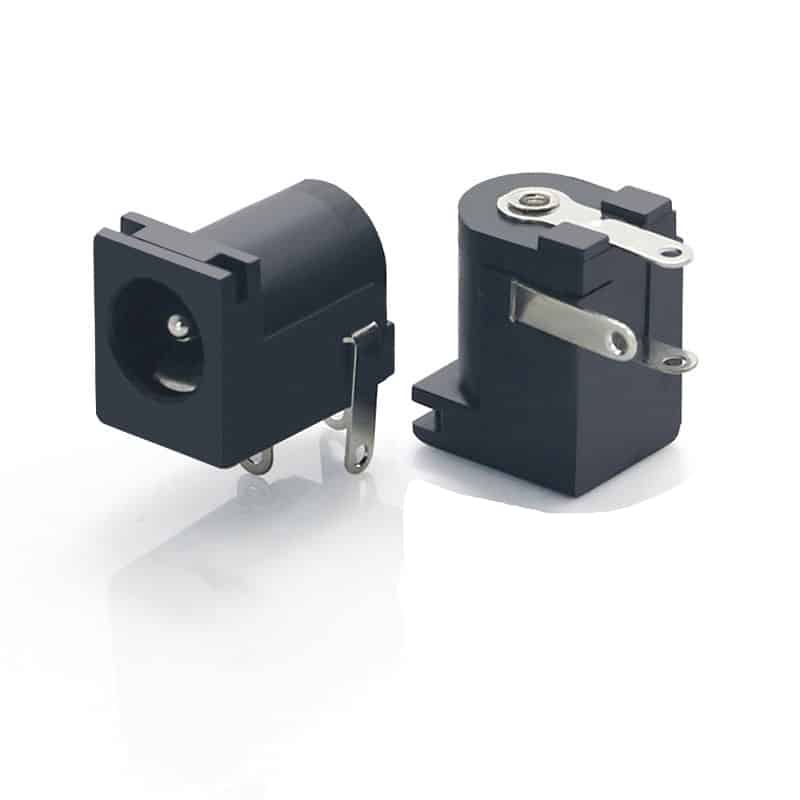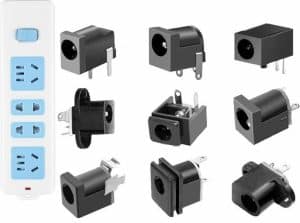DC power sockets are designed for direct current (DC) electrical connections, widely used in electronics, automotive systems, and industrial equipment. Key details include:
Basic Structure and Features
Interface Types
◦ Barrel Jack: Most common (e.g., 3.5mm/5.5mm outer diameter for routers, cameras).
◦ Aviation Connectors: Industrial-grade waterproof design with screw locking (e.g., GX16-3 pin).
◦ USB Type-C: Supports bidirectional power delivery and fast charging (PD/QC).
◦ Cigarette Lighter Sockets: For 12V/24V automotive power.
Core Parameters
◦ Voltage: 5V, 9V, 12V, 24V (must match device requirements).
◦ Current: 0.5A–10A+ (high-current models require enhanced heat dissipation).
◦ Polarity: Center pin typically positive (check labeling to avoid reverse polarity).
Protection Features
◦ Reverse polarity protection (prevents damage from incorrect connections).
◦ Waterproof ratings (e.g., IP67/IP68 for outdoor/industrial use).
◦ Vibration resistance (critical for automotive/mobile applications).
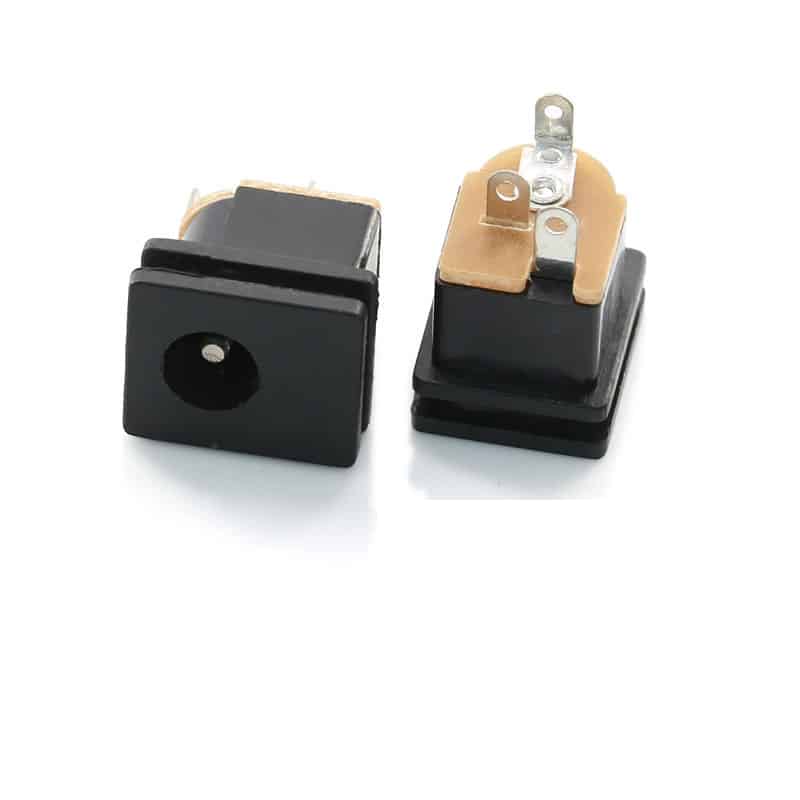
Common Applications
| Scenario | Typical Devices | Socket Type |
| Consumer Electronics | Routers, CCTV cameras, LED strips | Barrel jack (5.5×2.1mm) |
| Automotive Systems | Dashcams, car refrigerators, pumps | Cigarette lighter socket |
| Industrial Control | PLCs, sensors, motor drivers | Aviation connectors (GX series) |
| Portable Devices | Laptops, drone batteries, power banks | USB-C PD (supports 100W) |
| Solar Systems | Solar charge controllers, off-grid batteries | Waterproof terminals (XT60/XT90) |
Key Differences: AC vs. DC Power Sockets
| Feature | DC Sockets | AC Sockets |
| Current Type | Unidirectional flow (DC) | Alternating flow (AC) |
| Voltage Range | Low voltage (5V–48V) | High voltage (100V–240V) |
| Safety Risks | Overheating/fire from short circuits | Higher electrocution risk |
| Interface Design | Two-pole (+/−) or coaxial | Multi-pin (live/neutral/earth) |
| Typical Use | Electronics, battery systems | Household appliances, motors |
Safety and Selection Guidelines
Voltage/Current Matching
◦ Ensure socket output matches device voltage (±10% tolerance). ◦ Current capacity must cover peak device demands (e.g., motor startups).
Polarity Verification
◦ Use a multimeter to confirm polarity (center pin = +). ◦ Some sockets include reverse polarity protection diodes.
Environmental Adaptation
◦ Opt for waterproof connectors (IP67/IP68) in harsh conditions. ◦ Automotive use requires anti-vibration designs.
High-Power Scenarios
◦ Use gold-plated contacts or XT60/XT90 connectors for >5A currents. ◦ Avoid thin/long cables (voltage drop and overheating risks).
Specialized DC Sockets
Adjustable Voltage Sockets
◦ Multi-voltage support (e.g., 12V/19V for laptops). Brands: BELKIN, Baseus.
Smart DC Sockets
◦ Remote control via Wi-Fi/Bluetooth (e.g., Tuya Smart DC sockets).
Multi-Port Car Chargers
◦ Integrate USB-A/C, voltage displays, and cigarette ports. Examples: Xiaomi, Anker.
Industrial Connectors
◦ Phoenix Contact (high-temperature/corrosion resistance). ◦ Anderson Powerpole for emergency power systems.
Troubleshooting and Maintenance
- Poor Contact: Clean oxidized terminals with alcohol wipes.
- Overheating: Check for overloads or undersized cables.
- No Power: Test adapter output with a multimeter.
- Water Ingress: Replace seals or entire socket if damaged.
Purchasing Tips:
- Prioritize UL, CE, or RoHS certifications.
- Choose copper alloy or gold-plated contacts (lower resistance).
- Medical/industrial applications require specialized standards (e.g., IEC 60601).
For AC-to-DC conversion, pair with a compatible AC-DC adapter (ensure wattage alignment).
Advanced Design Considerations
Self-Locking Mechanisms
◦ Industrial-grade sockets often use spring locks or magnetic retention to prevent accidental disconnection (e.g., drone battery interfaces).
◦ Medical device sockets must comply with single-handed emergency operation standards (EN 60601-1).
EMI/RFI Shielding
◦ High-frequency equipment (e.g., 5G base stations) uses shielded connectors with metal layers to minimize signal interference.
◦ Example: Amphenol RF series EMI-resistant DC connectors.
Modular Hot-Swap Design
◦ Industrial sockets with arc-suppression circuits for hot-swapping (e.g., robotic charging docks).
Low-Temperature Adaptation
◦ Arctic or cold-chain equipment sockets use frost-resistant silicone jackets (-40°C flexibility).
Integration with Cutting-Edge Technologies
USB PD 3.1 Extended Power Range (EPR)
◦ Supports 28V/36V/48V outputs for power tools or outdoor energy storage systems. ◦ Requires EPR-certified cables.
Wireless DC Power Transfer
◦ Short-range contactless charging (Qi standard extensions) for underwater robots or explosive environments. ◦ Current limitations: ~70% efficiency, <5cm range.
GaN Integration
◦ Compact DC sockets with embedded GaN chips for higher efficiency (e.g., Anker 100W GaN car charger).
AI-Driven Power Optimization
◦ Smart sockets predict device demand using algorithms (e.g., Tesla Solar dynamic load balancing).
User FAQs Expanded
Q: Can DC sockets handle voltage spikes?
◦ A: Only if equipped with surge protection (e.g., MOVs). Industrial models often include spike suppression.
Q: How to extend the DC socket lifespan in dusty environments?
◦ A: Use IP6K9K-rated dustproof sockets or apply protective caps when unused.
Q: Are USB-C DC sockets backward-compatible with older USB standards?
◦ A: Yes, but power output may drop to match legacy devices (e.g., USB 2.0 limited to 5V/0.5A).
Future Trends
Global Standardization Efforts
◦ USB Type-C mandated for small devices in the EU; similar regulations proposed in Asia and North America.
Bidirectional Energy Flow
◦ Vehicle-to-Load (V2L) sockets enable EVs to power homes or tools (e.g., Hyundai IONIQ 5’s 3.6kW output).
Self-Healing Materials
◦ Shape-memory alloy contacts regenerate conductivity when heated (experimental phase).
Space-Grade Durability
◦ NASA developed hermetically sealed sockets for extreme thermal/radiation conditions.
Industry-Specific Solutions
Renewable Energy Systems
◦ Solar/Wind DC sockets with MPPT (Maximum Power Point Tracking) integration for optimized energy harvest.
Military/Aerospace
◦ MIL-DTL-5015-compliant connectors for shock/vibration resistance (e.g., ITT Cannon’s Series).
Medical Devices
◦ Isolated DC sockets with leakage current <10µA for patient safety (IEC 60601-1 compliant).

